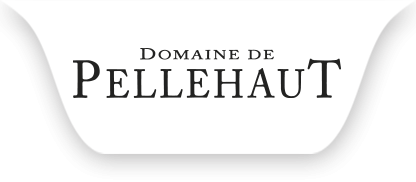Chateau de Pellehaut Armagnac Ténarèze
One single terroir, the cradle of brandies with character: Ténarèze.
The Armagnac region is composed of three zones, which correspond to different terroirs:
• Bas Armagnac (Lower Armagnac), composed mainly of very lightly, predominantly sandy soils.
• Ténarèze, on argillaceous sandy soils (boulbènes).
• Haut Armagnac (Upper Armagnac), argillaceous limestone.
Bas Armagnac has the particularity of producing very mild brandies that can be drunk young. It is this particularity that has made its reputation.
The clay soils of Ténarèze yield more robust and powerful brandies. At Pellehaut, we are proud of this terroir, which is a contributing factor to the quality of the wines and armagnac brandies produced here. The variety and complexity of the soils means that the wines produced in this area are much richer and fruitier.
Thanks to our geographical proximity to Bas Armagnac, the vinification process, choice of distillation method and ageing method, the brandies produced at Pellehaut are fine, mild and complex. This is proven by the numerous medals they have won and selections by the international press.
Grape varieties
At Pellehaut, two grapes varieties are used to produce the brandies:
• Ugni Blanc, used for the armagnacs that will be on sale from 15 years of age.
• Folle Banche, the oldest grape variety in the Armagnac region, which produces fine, complex brandies that can be drunk younger, from 10 years of age in the case of Château de Pellehaut.
Winemaking techniques
The wines from which the brandy is distilled are made in the traditional way, with particular care being taken to protect the juice, and then the wines, from oxidation in order to conserve the aromas without the need to add sulphites. Inert gas is therefore used to protect the grape juice throughout the vinification process. The wines are only distilled after careful ageing on the lees and regular stirring.
Distillation
The armagnac owes much of its typical character to the still.
At Château de Pellehaut, we distil the traditional way using the continuous still specific to the Armagnac region, the alambic armagnacais, heated by a wood-burning boiler.
It works using the “single distillation” principle, as opposed to the double distillation typical of the Charente region used to produce cognac and certain other armagnacs.
Consequently, the distiller attends to the still day and night, watching over the slow transformation of the wine into brandy.
This crucial stage in the production of the brandy is also a time of conviviality at Château de Pellehaut, as the presence of the still in the wine cellars is a sign that the grape harvest is over.
Ageing
On leaving the still, the brandy is kept in 400-litre barrels, referred to as ‘pièces’, made from open-grain oak (from the estate and the Limousin region).
The last Folle Blanche to be distilled are aged in the Bordeaux and Burgundy-type barrels that were used to make our best white wines.
Our armagnacs are diluted gradually with petites eaux, a mixture of distilled water and alcohol prepared long in advance: we add the alcohol to the water and not the other way round.








